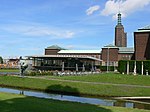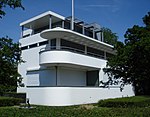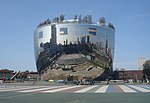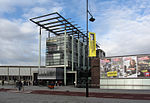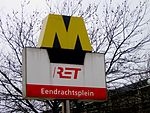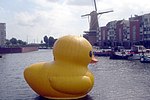Museumpark
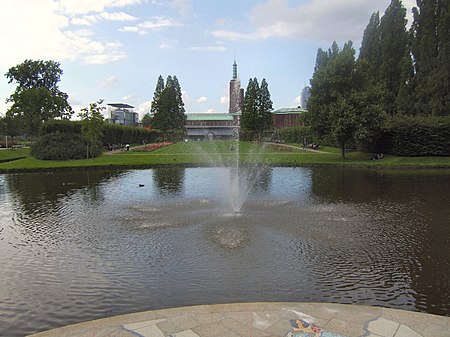
Museumpark is an urban park in Rotterdam, Netherlands, located between the Museum Boijmans Van Beuningen, Westersingel, Westzeedijk and the complex of the Erasmus MC, a medical centre affiliated with the Erasmus University. The park lies on the former land of the Hoboken family, who lived in the building that is since 1987 the Natuurhistorisch Museum Rotterdam. The park was laid out in 1927 to the design of the architect Witteveen. On the south side of the pond in the park a monument for Gerrit Jongh, director of municipal works in Rotterdam. There are several artworks in the park, so it also serves as a sculpture garden. There are a number of museums located in the vicinity of the park, hence the name: The Netherlands Architecture Institute (NAi), since 2013 Het Nieuwe Instituut Museum Boijmans Van Beuningen and its new Depot, opened on November 5, 2021 The Chabot Museum The Kunsthal Huis Sonneveld Natuurhistorisch Museum Rotterdam
Excerpt from the Wikipedia article Museumpark (License: CC BY-SA 3.0, Authors, Images).Museumpark
Museumlaan, Rotterdam Centrum
Geographical coordinates (GPS) Address Nearby Places Show on map
Geographical coordinates (GPS)
| Latitude | Longitude |
|---|---|
| N 51.913 ° | E 4.474 ° |
Address
Screwarch
Museumlaan
3015 LD Rotterdam, Centrum
South Holland, Netherlands
Open on Google Maps
